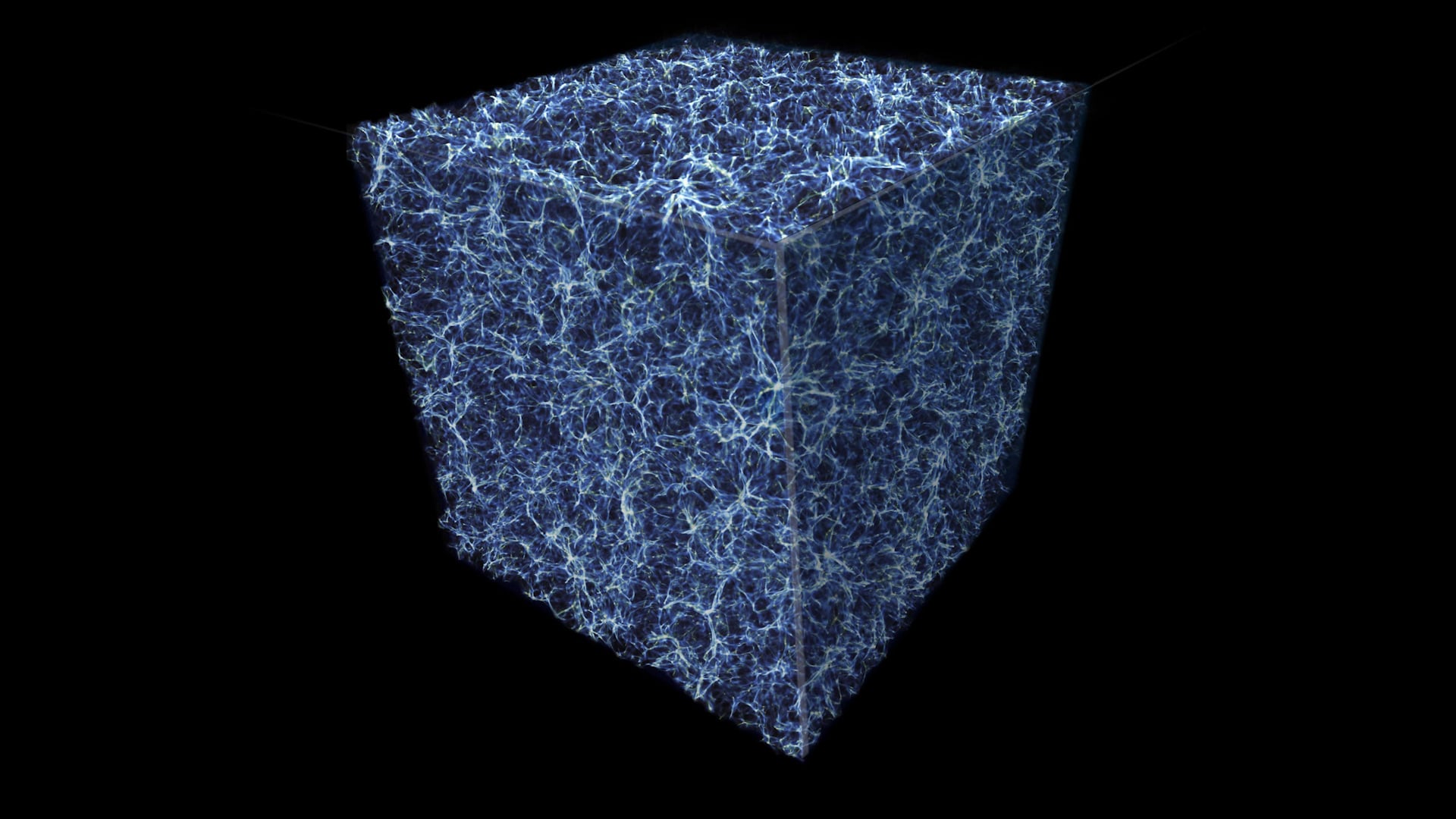For decades, the predominant cosmological model used by scientists has been based on the theory that in addition to baryonic matter - aka. "normal" or "luminous" matter, which we can see - the Universe also contains a substantial amount of invisible mass. This "Dark Matter" accounts for roughly 26.8% of the mass of the Universe, whereas normal matter accounts for just 4.9%.
While the search for Dark Matter is ongoing and direct evidence is yet to be found, scientists have also been aware that roughly 90% of the Universe's normal matter still remained undetected. According to
two
new studies
that were recently published, much of this normal matter - which consists of filaments of hot, diffuse gas that links galaxies together - may have finally been found.
The first study, titled "
A Search for Warm/Hot Gas Filaments Between Pairs of SDSS Luminous Red Galaxies
", appeared in the
Monthly Notices of the Royal Astronomic Society
. The study was led by Hideki Tanimura, a then-PhD candidate at the
University of British Columbia
, and included researchers from the
Canadian Institute for Advanced Research
(CIFAR), the
Liverpool John Moores University
and the
University of KwaZulu-Natal
.
[caption id="attachment_132292" align="aligncenter" width="580"]
All-sky data obtained by the ESA's Planck mission, showing the different wavelenghts. Credit: ESA
[/caption]
The second study, which recently appeared online, was titled "
Missing Baryons in the Cosmic Web Revealed by the Sunyaev-Zel'dovich Effect
". This team consisted of researchers from the
University of Edinburgh
and was led Anna de Graaff, a undergraduate student from the
Institute for Astronomy
at Edinburgh's Royal Observatory. Working independently of each other, these two team tackled a problem of the Universe's missing matter.
Based on cosmological simulations, the predominant theory has been that the previously-undetected normal matter of the Universe consists of strands of baryonic matter - i.e. protons, neutrons and electrons - that is floating between galaxies. These regions are what is known as the "Cosmic Web", where low density gas exists at a temperatures of 105 to 107 K (-168 t0 -166 °C; -270 to 266 °F).
For the sake of their studies, both teams consulted data from the
Planck Collaboration
, a venture maintained by the European Space Agency that includes all those who contributed to the
Planck mission
(ESA). This was presented
in 2015
, where it was used to create a thermal map of the Universe by measuring the influence of the Sunyaev-Zeldovich (SZ) effect.
This effect refers to a spectral distortion in the Cosmic Microwave Background, where photons are scattered by ionized gas in galaxies and larger structures. During its mission to study the cosmos, the
Planck
satellite measured the spectral distortion of CMB photons with great sensitivity, and the resulting thermal map has since been used to chart the large-scale structure of the Universe.
[caption id="attachment_136497" align="aligncenter" width="580"]
IR map of the whole Galaxy showing the plane and bulge of the Galaxy full of stars and dust. Credit: SDSS
[/caption]
However, the filaments between galaxies appeared too faint for scientists to examine at the time. To remedy this, the two teams consulted data from the North and South CMASS galaxy catalogues, which were produced from the 12th data release of the
Sloan Digital Sky Survey
(SDSS). From this data set, they then selected pairs of galaxies and focused on the space between them.
They then stacked the thermal data obtained by
Planck
for these areas on top of each other in order to strengthen the signals caused by SZ effect between galaxies. As Dr. Hideki told Universe Today via email:
While Tanimura and his team stacked data from 260,000 galaxy pairs, de Graaff and her team stacked data from over a million. In the end, the two teams came up with strong evidence of gas filaments, though their measurements differed somewhat. Whereas Tanimura's team found that the density of these filaments was around three times the average density in the surrounding void, de Graaf and her team found that they were six times the average density.
"We detect the low-dense gas in the cosmic web statistically by a stacking method," said Hideki. "The other team uses almost the same method. Our results are very similar. The main difference is that we are probing a nearby Universe, on the other hand, they are probing a relatively farther Universe."
[caption id="attachment_133472" align="aligncenter" width="580"]
This illustration shows the evolution of the Universe, from the Big Bang on the left, to modern times on the right. Image: NASA
[/caption]
This particular aspect of particularly interesting, in that it hints that over time, baryonic matter in the Cosmic Web has become less dense. Between these two results, the studies accounted for between 15 and 30% of the total baryonic content of the Universe. While that would mean that a significant amount of the Universe's baryonic matter still remains to be found, it is nevertheless an impressive find.
As Hideki explained, their results not only support the current cosmological model of the Universe (the
Lambda CDM model
) but also goes beyond it:
It also opens up opportunities for future studies of the Comsic Web, which will no doubt benefit from the deployment of next-generation instruments like
James Webb Telescope
, the
Atacama Cosmology Telescope
and the
Q/U Imaging ExperimenT
(QUIET). With any luck, they will be able to spot the remaining missing matter. Then, perhaps we can finally zero in on all the invisible mass!
 Universe Today
Universe Today
